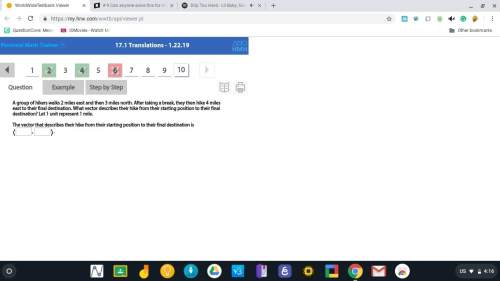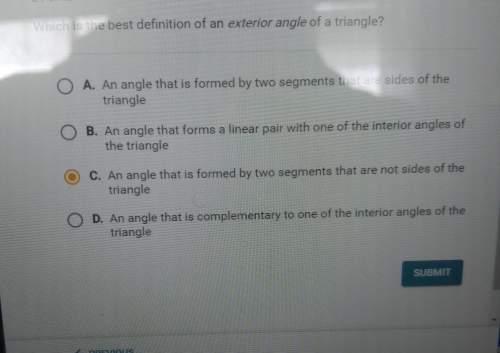
Mathematics, 01.12.2020 01:10 tyresharichardson29
Which of the following is an arithmetic sequence? 1/2, -1/2, 1/2, -1/2 ... 12, 4, 4/3, 16/3 ... 1/2, -1/2, -3/2, -5/2 ... 2, 4, 8, 16, ...

Answers: 1


Another question on Mathematics

Mathematics, 21.06.2019 15:00
Explain why the function is discontinuous at the given number a. (select all that apply.) f(x) = 1 x + 1 a = −1 f(−1) is undefined. lim x→−1+ f(x) and lim x→−1− f(x) exist, but are not equal. lim x→−1 f(x) does not exist. f(−1) and lim x→−1 f(x) exist, but are not equal. none of the above
Answers: 3

Mathematics, 21.06.2019 15:40
Use the discriminant to describe the roots of each equation. then select the best description. 2m2 + 3 = m double root real and rational roots real and irrational roots non-real roots
Answers: 2

Mathematics, 21.06.2019 17:10
Consider the functions below. function 1 function 2 function 3 select the statement which is true about the functions over the interval [1, 2] a b function 3 has the highest average rate of change function 2 and function 3 have the same average rate of change. function and function 3 have the same average rate of change function 2 has the lowest average rate of change d.
Answers: 3

Mathematics, 21.06.2019 17:30
Monthly water bills for a city have a mean of $108.43 and a standard deviation of $32.09. find the probability that a randomly selected bill will have an amount greater than $155, which the city believes might indicate that someone is wasting water. would a bill that size be considered unusual?
Answers: 1
You know the right answer?
Which of the following is an arithmetic sequence? 1/2, -1/2, 1/2, -1/2 ... 12, 4, 4/3, 16/3 ... 1/2,...
Questions


Mathematics, 05.05.2020 10:51

English, 05.05.2020 10:51




Mathematics, 05.05.2020 10:51






English, 05.05.2020 10:51

Mathematics, 05.05.2020 10:51

English, 05.05.2020 10:51


Biology, 05.05.2020 10:51

Social Studies, 05.05.2020 10:51






